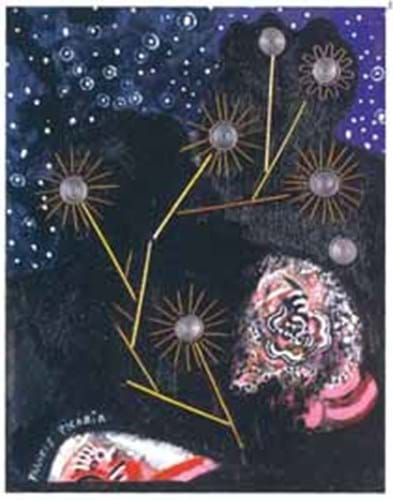
Picabia's Flirt, pictured right, measuring 3ft x 2ft 5in (92 x 73cm), and embellished with straws, toothpicks and seven coils of lead wire, raised €800,000 (£571,400).
Picabia, noted expert Marcel Fleiss, saw collages as "a good opportunity to escape from the traditional means of painting" and often used everyday objects such as coins, medals, hairpins, combs and feathers. He produced his first collage around 1920 but this one was done in 1925, the year Picabia moved to the Riviera.
At the time, hampered by a lack of oil paints, Picabia turned to fast-drying Ripolin industrial paint, which enabled him to work on several pictures at once. Flirt is similar in concept to several other 1925 works of virtually identical dimensions, including Vase de Fleurs (now in the Paris Modern Art Museum), which shares the coiled wire motif which Fleiss believes to be a lovers' symbol.
Fleiss also suggested, in his detailed catalogue entry, that the work's speckled blue and black ground was reminiscent of a starry sky, and that its pink patterns, evoking floral sprays or fabric patterns, reflected Picabia's opinion that painting was an "optical pleasure, as everything is decorative".
Flirt's first owner was Marcel Duchamp, the second Tristan Tzara, who bought it at the Duchamp sale at Drouot in March 1926. Its most recent auction appearance was at the sale of the Barnet Hodes Collection at Christie's New York in 1984. It was shown frequently in public after WWII, starting with the Picabia Dada exhibiton in Paris in 1951, and appeared at no fewer than nine exhibitions, with themes ranging from Dada to Surrealism, Collages, and the Circle of Guillaume Apollinaire, held between 1958 and 1962 in Dusseldorf, Amsterdam, London, Paris and Berne.




